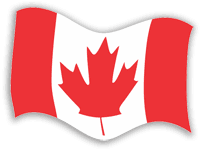|
On September 15 and 16,
1993 a battalion of the Canadian Army engaged in battle for the
first time since the end of the Korean War 40 years before. The
Canadian battalion — 2nd Battalion of the Princess Patricia’s
Canadian Light Infantry (2PPCLI) — was defending the approaches
to Medak, a small town along the border between Croatia and
Bosnia-Herzegovina. The Canadians were in the Balkans as part of
a United Nations peacekeeping force named UNPROFOR (United
Nations Protection Force) that had been formed in 1992 to guard
specially designated United Nations Protected Areas along the
northern and western border of Bosnia-Herzegovina. These areas
had been set up for the safety of the local populations and for
refugees in the three-way civil war that began with the break-up
of the Republic of Yugoslavia beginning in 1991. The Canadians
at Medak defended the area against a Croat attack, thus saving
many civilian lives. No Canadians were killed, but as many as 30
of the Croat force may have died in the day-and-a-half clash.
Yugoslavia was created at the end of the First World War, an
uneasy collection of religious, ethnic and linguistic groups in
one state. After the Second World War the country was held
together by the dictatorship of Josip Broz Tito, a Communist who
died in 1980. Yugoslavia then came under the sway of Serbian
president Slobodan Milosevic who suppressed break-away sentiment
in the country with the Yugoslavian National Army (JNA),
dominated by Serbs.
Immediately after the Cold War ended, Slovenia — the westernmost
part of Yugoslavia — declared its independence. The JNA barely
resisted this breakaway but when Croatia — the part of
Yugoslavia just to the east of Slovenia — also broke away, war
broke out between Croatia and the remainder of Yugoslavia.
Shortly after, Bosnia-Herzevogina, which lies between Croatia
and Serbia, also declared independence.
Croatia is predominantly Roman Catholic, Serbia is predominantly
Eastern Orthodox (affiliated to the Russian Orthodox Church),
while Bosnia-Herzevogina is predominantly Muslim. Historic
rivalries had led to hatred and mass killing among these three
groups for many centuries. But in some areas, particularly the
city of Sarajevo (which was declared to be the capital of
Bosnia-Herzevogina) the three peoples had intermingled for
several generations.
By the end of 1992 a three-way civil war raged between Croatia,
Bosnia-Herzegovina and what was left of Yugoslavia which was
really Serbia-Montenegro. The United Nations tried to broker a
cease-fire and created UNPROFOR to monitor it. Canada
contributed an infantry battalion which was based in the border
region between Croatia and Bosnia-Herzegovina. Later, as the war
intensified and Serb forces surrounded and besieged Sarajevo,
Canada sent a second battalion to UNPROFOR. This second unit was
based at Visoko, about 25 kilometres north of Sarajevo.
The three way civil war was marked by ethnic cleansing —
horrific efforts by all three sides to kill or expel the
minority groups within their boundaries. Bosnia-Herzegovina
itself had large enclaves of Croatians and Serbs who formed
guerilla groups to aid the main armies of their ethnic or
religious allies. Tens of thousands of innocent civilians were
murdered, maimed, tortured, raped or driven out of their homes
by the warring armies.
All three sides were convinced that the UN forces, including the
Canadians, were sympathetic to the others. Thus UN forces became
a favourite target of all three armies. The peacekeepers were
hampered by their lack of heavy weapons, shortages of supplies,
rules of engagement (rules that told soldiers who and when they
could shoot at to defend themselves) and lack of organized and
efficient command from UN headquarters in New York. Canadian and other UNPROFOR soldiers were often under
fire, usually harassed and sometimes humiliated by all three
sides.
One of the best-known Canadian personalities of this period was
Brigadier General (later Major General) Lewis MacKenzie who was
in command of UN forces in Sarajevo. Saravejo was under constant
siege and continuing attack by Serbs from April 1992 to February
1996. MacKenzie took command of Sector Sarajevo in the spring of
1992; his most important accomplishment was to arrange to open
the road from the city of Sarajevo to the airport allowing
humanitarian flights to bring in food and medical supplies.
NATO forced the civil war to end with the Dayton Peace Accords
in December 1995, then poured 60,000 NATO and other troops into
Bosnia. NATO
aircraft flew overhead to enforce the ceasefire. Canada withdrew
its forces from UNPROFOR, which broke up in any case, but
contributed to the initial NATO Implementation Force — and after
December 1996 to Sustainment Force. Virtually all Canadian
troops left the Balkans after NATO decided to hand over its
authority to the European Community in 2004. In all, some 20
Canadian troops were killed and more wounded while serving with
UNPROFOR. The Balkan missions persuaded many Canadians that
peacekeeping had changed and, perhaps, no longer worked.
Next Instalment: Canada in Afghanistan
The Canadian Experience is a 52-week
history series designed to tell the story of our country to all
Canadians. Sponsored by Multimedia Nova Corporation and
Diversity Media Services partners, the series features articles
by our country’s foremost historians on a wide range of topics.
Past articles and author bios are available at
http://www.cdnexperience.ca. The Canadian
Experience is copyright ©2010-2011 Multimedia Nova
Corporation. |
List of
published "Canadian Experience" articles |

 #51 Peacekeeping Turns into War: the Balkans
#51 Peacekeeping Turns into War: the Balkans
